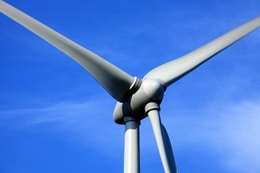
Wind Turbine Blade Design
Should wind turbine blades be flat, bent or curved
![]() The wind is a free energy resource, until governments put a tax on it, but the wind is also a very unpredictable and an unreliable source of energy as it is constantly changing in both strength and direction. So to ensure we get the most out of the available wind energy, it is important that the wind turbine blade design is of an optimal performance.
The wind is a free energy resource, until governments put a tax on it, but the wind is also a very unpredictable and an unreliable source of energy as it is constantly changing in both strength and direction. So to ensure we get the most out of the available wind energy, it is important that the wind turbine blade design is of an optimal performance.
To produce useful amounts of power, wind turbines generally need to be large and tall, but to work efficiently they also need to be well designed and engineered which makes them expensive too. Most wind turbines designed for the production of electricity have consisted of a two or three bladed propeller rotating around a horizontal axis. It’s obvious to say that these propeller like wind turbine blade designs convert the energy of the wind into usable shaft power called torque.
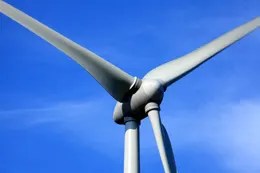
This is achieved by extracting the energy from the wind by slowing it down or decelerating the wind as it passes over the blades. The forces which decelerate the wind are equal and opposite to the thrust type lifting forces which rotates the blades.
Just like an aeroplane wing, wind turbine blades work by generating lift due to their curved shape. The side with the most curve generates low air pressure while high pressure air beneath pushes on the other side of the blade shaped aerofoil. The net result is a lifting force perpendicular to the direction of flow of the air over the turbines blade. The trick here is to design the rotor blade in such a way as to create the right amount of rotor blade lift and thrust producing optimum deceleration of the air and therefore better blade efficiency.
If the turbines propeller blades rotate too slowly, it allows too much wind to pass through undisturbed, and thus does not extract as much energy as it potentially could. On the other hand, if the propeller blade rotates too quickly, it appears to the wind as a large flat rotating disc, which creates a large amount of drag.
Then the optimal tip speed ratio, TSR, which is defined as the ratio of the speed of the rotor tip to the wind speed, depends on the rotor blade shape profile, the number of turbine blades, and the wind turbine propeller blade design itself. So which is the best blade shape and design for a wind turbine blade design.
Generally, wind turbine blades are shaped to generate the maximum power from the wind at the minimum construction cost. But wind turbine blade manufacturers are always looking to develop a more efficient blade design. Constant improvements in the design of wind blades has produced new wind turbine designs which are more compact, quieter and are capable of generating more power from less wind. Its believed that by slightly curving the turbine blade, they’re able to capture 5 to 10 percent more wind energy and operate more efficiently in areas that have typically lower wind speeds.
Wind Turbine Blade Design
So which type of blade shape would produce the greatest amount of energy for a wind turbine – Flat blades are the oldest blade design and have been used for thousands of years on windmills, but this flat broad shape is becoming less common than other types of blade design. The flat blades push against the wind, and the wind pushes against the blades.
The resulting rotation is very slow because the blades that are rotating back on the up stroke after generating power are in opposition to the power output. This is because the blades are acting like huge paddles moving in the wrong direction, pushing against the wind giving them the name of drag-based rotor blades.
However, flat blade designs offer significant benefits for the DIY’er compared to other wind blade designs. Flat rotor blades are easy and cheap to cut from a sheets of plywood or metal ensuring that the blades have a consistent shape and size. They are also the easiest to understand requiring less design and construction skills. However, their efficiency and the ease of generating electrical power is very low.
Curved blades are very similar to a long aeroplane wing (also known as an aerofoil) which has a curved surface on top. The curved blade has air flowing around it with the air moving over the curved top of the blade faster than it does under the flat side of the blade, which makes a lower pressure area on top, and therefore, as a result, is subjected to aerodynamic lifting forces which create movement.
These lifting forces are always perpendicular to the curved blade’s upper surface which causes the blade to move rotating around the central hub. The faster the wind blows, the more lift that is produced on the blade, hence the faster the rotation.
The advantages of a curved rotor blade compared to a flat blade is that lift forces allow the blade tips of a wind turbine to move faster than the wind is moving generating more power and higher efficiencies. As a result, lift based wind turbine blades are becoming more common now. Also, home made PVC wind turbine blades can be cut from standard sized drainage pipes having the curved shape already built-in giving them the best blade shape.
Curved Blade Air Flow and Performance
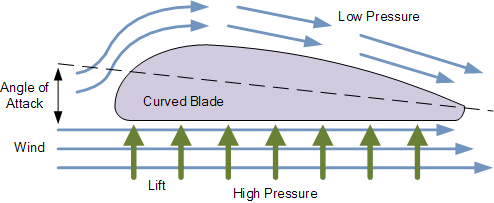
But curved blades also suffer from drag along its length which tries to stop the motion of the blade. Drag is essentially the friction of air against the blade surface. Drag is perpendicular to Lift and is in the same direction as the air flow along the blade surface. But we can reduce this drag-force by bending or twisting the blade and also tapering it along its length producing the most efficient wind turbine blade design.
The angle between the direction of the oncoming wind and the pitch of the blade with respect to the oncoming wind is called the “angle of attack”. As this angle of attack becomes larger, more lift is created but as the angle becomes even larger, greater than about 20o, the blade will begin to decrease lift. So there is an ideal pitch angle of the rotor blade that creates the best rotation and modern wind turbine rotor blades are actually designed with a twist along their length from a steep pitch at their root to a very shallow pitch at their tip.
As the speed at the tip of a rotating blade is faster than it is at its root or center, modern rotor blades are twisted along their length by between 10-to-20o from root to tip so that the angle of attack decreases from where the air is moving relatively slowly near to their root, to where it is moving much faster at the tip. This blade twist maximises the angle of attack along the length, getting the best lift and rotation.
In conclusion, a wind turbines rotor blade length determines how much wind power can be captured as they rotate around a central hub and the aerodynamic performance of wind turbine blades is very different between a flat blade and a curved blade. Flat blades are cheap and easy to make but have high drag forces making them slow and inefficient.
To increase the wind turbine blade efficiency, the rotor blades need to have an aerodynamic profile to create lift and rotate the turbine but curved aerofoil type blades are more difficult to make but offer better performance and higher rotational speeds making them ideal for electrical energy generation.
But to obtain the best design for wind turbine blades we can improve the aerodynamics and efficiency even more by using twisted, tapered propeller-type rotor blades. Twisting the blade changes the winds angle along the blade with the combined effect of twisting and tapering the blade along its length improves the angle of attack increasing speed, efficiency while reducing drag. Also, tapered blades are stronger and lighter than straight blades as the bending stress are reduced.
Wind turbine blade design is crucial in order to make a wind turbine work as per the expectations. Innovations and new technologies used for designing wind turbine blade have not stopped here, as new formulas and designs are being considered to improve their performance, efficiency and power output daily.
To learn more about “Wind Turbine Blades” and how they work as part of a wind power system, then Click Here to order your Wind Power For Dummies book from Amazon today and find out more about wind turbines, wind energy and wind generators for generating your own free power.



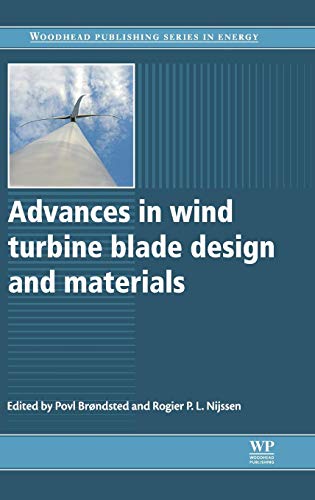


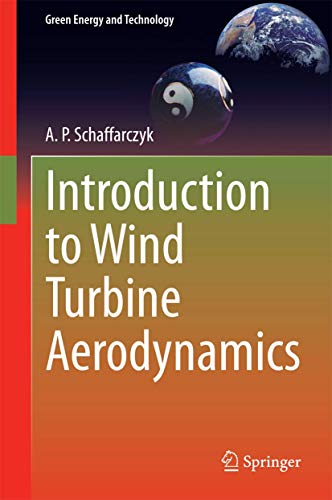
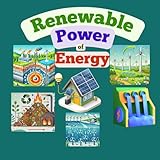



Very helpful lol i was doing a project on how wind turbine shapes (flat and curvy) change the amount of energy it produces and i legit could not find any article for evidence but this helped
I have been thinking and doing a lot of research over the past 10 years with the intention of designing a
( vertical axis ) horizontal windmill that would be an improvement over existing designs. I also have some ideas on how to improve the output/efficiency of a small horizontal axis turbine. My background includes Propeller design, Wing design, Aircraft design, General physics, Nuclear physics, Math, Metallurgy, Heat transfer, Fluid Flow and other College level Courses. I am a Pilot and I built my own Experimental aircraft (GLASAIR). I carved the propeller on this plane and made airframe modifications to increase speed and efficiency. I took first place in the Air-Venture Air Race from Kitty Hawk NC to Oshkosh WI. with this Plane using my propeller. Designing a good wind turbine blade is much like designing an aircraft propeller.
Power output of a wind turbine is proportional to turbine size/blade size . A small Turbine will produce a small amount of Power, and no design can change this fact. These small blades must be very well designed to take maximum advantage of the wind force. Output of a generator is determined by torque per unit time. More torque and higher RPM on the output shaft will produce more power. Wind speed and blade length have a significant affect on power output. Double the wind speed and the power output increases by a factor of four. Double the blade length and the power will also increase by a factor of four. Wind speed energy is transferred to the turbine blade by converting wind speed to force on the blade by decreasing the wind speed across the blade. It has been determined that a 2/3 velocity decrease in wind speed will transfer the most energy to the blade. Length of moment arm (blade length) multiplied by force on the arm equals torque on the shaft. Power is torque per unit time. Friction in the system compared to torque on the output shaft is a very important consideration with small turbines. Friction compared to turbine size is more of a factor with small turbines. Torque reduced by friction reduces power output. With a limit to blade length, the only way to increase power output is to design a more efficient blade. The challenge is to determine the best blade type, number of blades, blade shape, blade area, blade length, aspect ratio, and blade pitch for a given size of generator and wind speed at a given location. The turbine blade will be less efficient at all other wind speeds. You must use the previous criteria to design a blade for a given location and wind speed. The blades must be designed for the average wind speed of the location. With a fixed pitch blade, there is only one design that will be ideal for a given wind speed. A controllable blade could help a little to allow a blade to be efficient over a greater range of wind speeds. All of the seven criteria I listed have an optimum value to create the most power for the turbine you are designing for your location. It might take a super-computer to combine all of these criteria and maybe others to determine the best blade for your turbine. The angle of the blade relative to wind direction must change from tip to root to obtain the most power at a given wind speed and this angle change is determined by wind speed. An ideal blade must always face directly into the wind. There is no doubt in my mind that the best design for a small wind turbine is a simple horizontal axis turbine with blades optimized for a given wind speed. The blade for a small wind generator must be very well designed to produce a usable amount of power. The blades should be as light and strong as necessary for the specific design.
It is my opinion that ideal turbine blades for small horizontal turbines do not exist at this time. With supercomputers and AI, it may be possible to design blades for any given blade length and wind speed. There has been a lot of research in this area and the basic theory does exist. To date, it appears that no one has done this yet.
Chuck
This article takes a slightly different look into the design of wind turbine blades for maximum energy production. Starting off with the principles of aerodynamics, this article takes a look at lift, drag, and the angle of attack for flat versus curved blades, explaining how curved blades make the process more efficient. It also covers things like twist and taper. The article could be improved by adding new materials, cost factors, and advanced designs like vertical-axis turbines or biomimicry for a future perspective.
I just want to say that very nicely learn the concept of using curved shape blade.
The object, of course is to create as much energy (electricity) as possible from a given wind source. An ongoing study is being conducted to design a turbine blade for that purpose. The basic concept is to capture the thrust of the wind to produce high rotational energy (torque),opposite that of a conventional style “propeller”. The optimal shape in this study is a “combination airfoil” of a much higher surface area. So far, this design has produced a very high percentage of wind energy capture, so much so that this design merits investigation from a different perspective in the area of capturing wind thrust.
I think that wind energy is very good and very indispensable, for many of us it is a very very good means, nowadays wind energy has renewed the way of obtaining electricity since it is a quite good method and does not affect the environment atmosphere
Last year I bought and installed a three blade windmill on a 20ft.pole at a windy point of my property. It was that is the turbine blades were designed for higher wind speeds but did produce energy. The bad news is that the blades were made of plastic. After repairing one of the blades another one soon failed at the same connection point. So I have purchased some aluminum plates and bar stock with plans of laminating them together/welding and milling.thus the interest in foil design.I’m wondering about the twist in the blade. Has anyone tried to build or design the blades to pivot at the hub connection point?
Thanks
There are various mechanisms available that attach a turbines rotor blades to its hub to vary the blades pitch. Rotor blades can be turned, or “pitched”, in-to or out-of, the oncoming wind allowing small-scale wind turbines to regulate their wind load if it is too high or too low to produce electricity. The idea/design is similar to those used for propeller aircraft and helicopter blades, but works in the opposite sense.
“Drag is perpendicular to Lift and is in the same direction as the air flow”
That’s very true in an airplane, but isn’t there a drag parallel to lift in the case of a wind turbine blade? While the chord thickness of the blade obviously affects the wind going over it, but since the blade can only move roughly perpendicular to the wind, doesn’t the width of the blade generate wind resistance as it’s trying to spin through the air? Isn’t that why the tips of wind turbine blades taper so thinly at the ends?
A somewhat inaccurate explanation of how the curved section blade creates lift makes me sceptical of the rest of the article. It totally ignores Newtons 3rd law by which most of the lift is generated. To create any appreciable force, the airfoil needs an angle of attack greater than that shown in the diagram where the flow is parallel to the underside. Check out Wikipedia ‘Lift (force)’.
Ahh, an expert who quotes Wikipedia. Then your argument is automatically flawed.
Burnnnn!!!!
Wikipedia has its sources. If you don’t trust it, check the citations.
Then how do airplanes stay aloft when flying in level flight? Newton didn’t know anything about flight and lift from air passing over an airfoil. Bernoulli is your man, iirc. What you described by angle of attack is the bare force of wind hitting the blade, but lift generates a force by the difference in pressure between the top and bottom of the wind, due to the shape of the airfoil – and is much more efficient because the wing’s low angle of attack generates less drag. Newton is good for a kite not a wing.
In a short text a wide explanation of the main concepts.
The article doesn’t talk about the number of blades impact on the whole system efficiency.
With the most common solutions (1, 2 or 3 blades) it seems that a lot of wind is passing through without being engaged by the blades: Why we never see more than 3 blades?
Please read our tutorial about Betz Limit and a wind turbines coefficient of power
Excellent article , explaining the aerodynamic theory of wind turbine blades and design. I really like it
What would happen if you added a cupping area around the bottom to catch air? Would that be a better design or is this way more efficient?
Turbine blades like those used in Vertical Axis Wind Turbines (VAWT) or Anemometers can use spherical cups or buckets attached to the ends of arms to extract the winds energy. However, for Horizontal Axis Wind Turbine (HAWT) blades, it would not be a practical idea as these require an efficient propeller-type airfoil shape and design
Good explanation of blade shape.
Lbs
I like the way you present it. More research is needed to model the complexity of cost, shape and twist.
Thanks
Thank you for the help and information.
A great way to present wind turbine blades design without any mathematical equations. There may be a significant cost difference between the three types: flat, curved, and twisted and tapered blades. How do the efficiencies of the three different types compare? Are most recent installations using the twisted and tapered design?
Clearly, the size, complexity and resulting build time of any wind turbine blade shape will ultimately determine its overall cost. The type of material used in its construction such as: wood, metal, plastic, carbon fibre, etc will also have a bearing on cost. Then there is no one “mathematical equation” to fit all types as a simple flat metal blade would be the cheapest and simplest to manufacture compared to a twisted or curved carbon fibre blade.
I think the most efficient design of blade is dependent on wind speed, there’s no “one size fits all”
very useful information
thank you
NPC ah comment
I love the complexity, yet simplicity of this article
very nice!!!!
Like it. Now I can begin making a rotor of my own. Thanks!
Lmao same.
Look at username
lol its wrong way
Nice
thanks nice, im dad
I like ur name!!!
bad it did not help that much we need more styles
Nice
Yeah me too. This is helpful. I got the design I need. How is the project going?
Hello, and thanks for the information! Were doing a project, on how to build a wind mill blade (replica) and the max is 12 blades, also what is the different types of blades, and i need some more info on the shape, Thanks!
this is useless
nice
this really helped me
heyyy
facts
I have ice king
cool
I’ll clap you in fortnite
I’ll beat you in two week’s time
you trippin
Wind is life
Sometimes bob the builder goes into my room at night and…
I’m sorry sonny